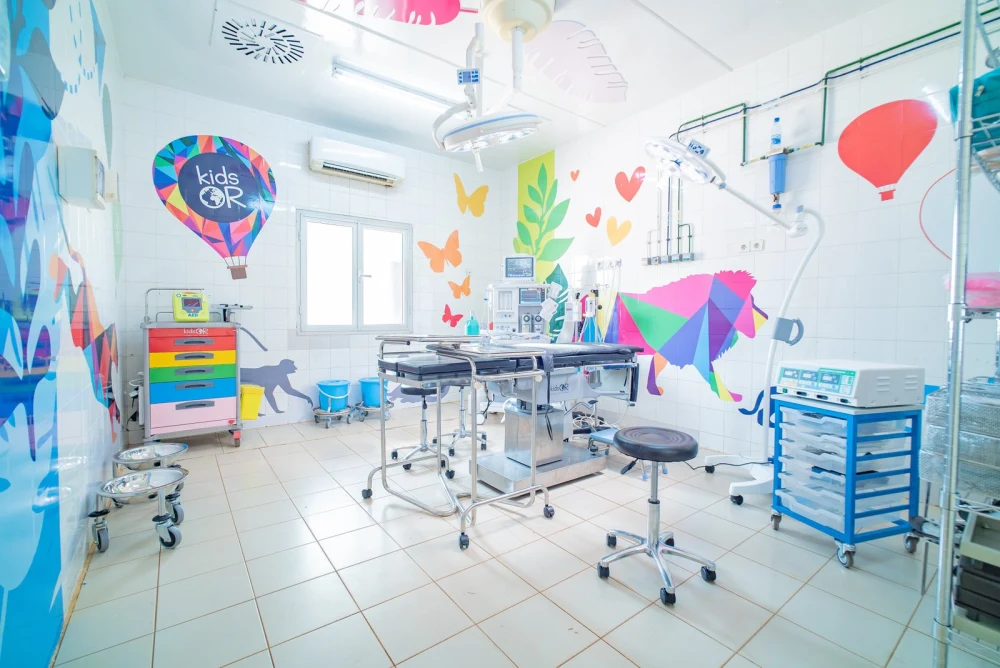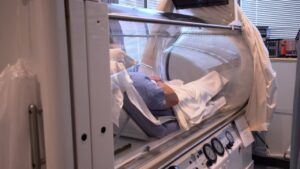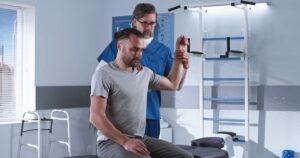Undergoing surgery is a daunting prospect for anyone—but especially for children. The combination of unfamiliar surroundings, strange smells, bright lights, and perceived pain can amplify a child’s anxiety.
However, pediatric surgical facilities and design teams around the world have been making steady advances in transforming operating environments into spaces that reduce fear and promote calm.
By combining evidence‑based design principles with child‑friendly touches, healthcare providers can turn clinical settings into comforting environments that support both physical healing and emotional well‑being.
1. Applying Evidence‑Based Design for Healing Environments
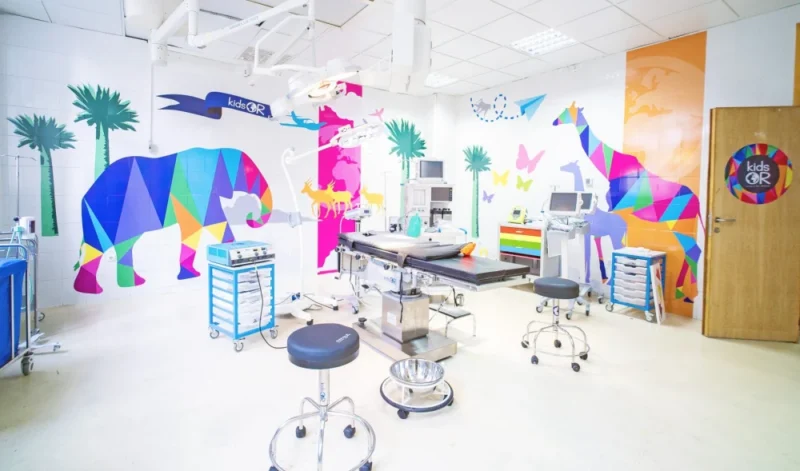
A growing body of research highlights how the physical environment can impact recovery. Evidence‑based design advocates for environments that reduce stress—through natural light, access to nature, noise control, privacy, positive distractions, and a sense of control.
Although originally studied in adult settings, these design principles apply equally—if not more—to pediatric care (e.g., windows with calming views, interactive art, and quiet zones).
When surgical rooms and their associated areas are designed with these factors in mind, children experience less fear, require fewer pain medications, and often recover more quickly.
2. Color, Art & Distraction: Creating a Kid‑Friendly Setting
Hospitals traditionally look sterile and intimidating—with bright whites, hard surfaces, and minimal decoration. But many pediatric surgical centers now embrace vibrant, comforting colors and themes to lessen anxiety:
- Walls and murals: Gentle pastel colors, friendly cartoons, nature scenes, or local artwork can transform walls into something engaging. These visual stimuli offer distraction and reassurance during pre‑op and recovery .
- Interactive art and ceiling installations: Utilizing ceiling art in procedure rooms (e.g., painted skies or stars) helps children redirect attention during IV starts or anesthesia induction.
- Personalizable posters: Allowing families to bring or even create their own posters for the room fosters a sense of familiarity and ownership. For easy customization, facilities can partner with services offering high-quality poster printing, enabling vibrant, unique displays tailored to each patient’s preferences.
These elements not only distract but also create an environment that feels warm and engaging, putting children at ease.
3. Comfort Tools: Lighting, Sound & Furnishings
Beyond appearance, environmental factors such as light, sound, and furniture significantly affect patient experience:
- Soothing lighting: Harsh overhead lighting can be frightening. Adjustable lighting—warm, indirect, or dimmable fixtures—prevents glare and supports circadian rhythms. This is backed by studies demonstrating faster recovery when patients are exposed to natural or soft lighting.
- Sound control and positive audio: Hospitals are noisy by default. Minimizing unnecessary noise, adding soft music or nature sounds, and providing headphones help children remain calm and less overwhelmed .
- Home‑like furnishings: Incorporating soft seating, colorful rugs, and plush pillows makes clinical spaces less cold and more relaxing. Providing children’s chairs or bean bags in waiting and recovery areas gives them choices and a sense of control.
These thoughtful touches signal to a child that the space was arranged with their comfort in mind—not merely for medical efficiency.
4. Layout Design: Zoning & Flow
The overall layout of surgical suites and adjacent areas is critical in reducing stress through separation, flow, and familiar zones:
- Separate pathways: Many facilities now use one corridor for patients entering and another for postoperative exits, ensuring children don’t encounter sicker patients during their journey.
- Dedicated spaces by stage: Child‑specific pre‑op zones, induction rooms, and post‑anesthesia care units (PACUs) ensure that children experience environments tailored to their needs rather than adult‑oriented ones.
- Zoned waiting and play areas: Waiting rooms equipped with toys, games, books, and interactive tables keep young patients occupied in engaging yet non‑clinical ways.
- Child life specialist integration: Embedding trained professionals in these zones supports children through explanation, play‑based interventions, and emotional preparation.
Through clear zoning and purposeful design of each functional area, institutions reduce anxiety at every stage.

5. Familiar Items & Family Presence
Maintaining a connection to home and family is essential in any pediatric setting. Comforting personal items—like favorite toys, blankets, pillows, or nightlights—can significantly reduce stress. Hospitals can encourage families to bring these items, and provide storage nearby so the child always has easy access.
Allowing one or both parents to accompany the child through induction up to the point of anesthesia, and promptly reuniting them in recovery, provides emotional stability and continuity. Presence of family members has been shown to alleviate fear and support healing.
6. Distraction Tools: Technology & Interaction
Distraction is a proven technique in pediatric care to reduce pain and anxiety during procedures:
- Tablets, movies, VR glasses: Many institutions offer entertainment devices during procedures to shift focus and calm nerves.
- Interactive games and apps: Games that engage hands and attention, such as simple drawing apps or child‑friendly interactive stories, can hold the child’s mind during blood draws or IV placement.
- Toy stations near recovery areas: Craft stations or durable toys in recovery rooms allow children to play and distract themselves while still under monitoring.
Combined with child life specialist support, these tools enable smoother procedures and reduce the need for sedation or restraints.
7. Staff Training & Communication
Even the most inviting environment won’t overcome fear if staff aren’t trained in pediatric communication:
- Child‑centered language: Using simple, reassuring terms (e.g., “sleep doctor” instead of “anesthesiologist”) and honest yet gentle explanations help children understand what’s happening.
- Distraction support during procedures: Nurses, child life specialists, or trained volunteers can hold hands, guide breathing, or provide supportive commentary while using distraction techniques .
- Empathy and engagement: Smiles, humor, and friendly interaction—even with limited time—can ease tension more than any decor can.
Ongoing training in pediatric care techniques ensures consistency in creating positive experiences.
8. Incorporating Nature & Outdoor Views
Research supports the inclusion of natural elements—like views of greenery, window access, and indoor gardens—to reduce stress and improve healing outcomes. Even if the operating room itself lacks windows, recovery areas and family lounges can benefit. Indoor plant installations, aquariums, nature photography, or digital nature panels offer visual relief and help orient children during stressful times.
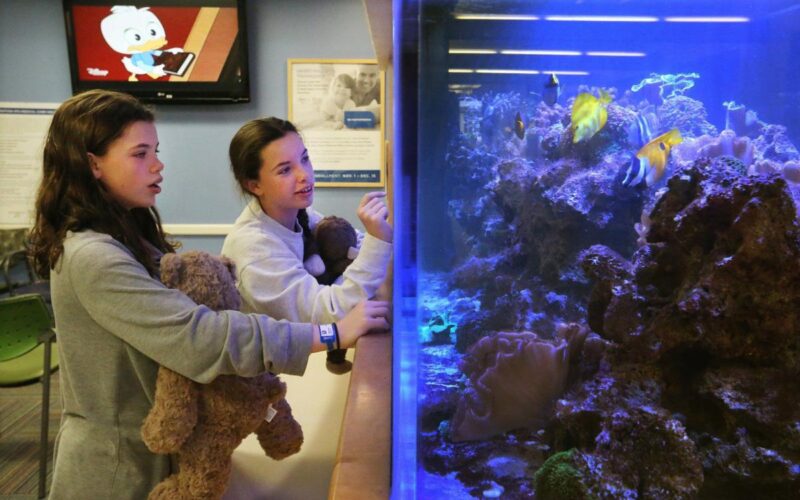
9. Privacy, Control & Family Support
Environments that allow privacy, choice, and control support emotional well‑being:
- Private rooms or curtained bays: Kids resting with family members nearby in private spaces experience less fear and greater comfort.
- Adjustable lighting and sound options: Offering parents control over lights and background noise gives families ownership and enhances stability.
- Sleep‑over accommodations: Allowing a parent to stay overnight with their child significantly eases anxiety and promotes restful recovery .
Together, these features foster family presence and reinforce a sense of safety.
10. Continuous Feedback & Improvement
An environment tailored to children’s comfort is never complete—it evolves:
- Surveys and interviews: Asking families about their experience, comfort levels, and suggestions yields direct insights.
- Staff feedback: Nurses and child life specialists can report which features are most effective in practice.
- Ongoing iterations: From adding sensory equipment to updating color schemes or furniture, continuous refinement ensures spaces stay current and relevant.
Listening to users—children, parents, and clinicians—ensures the space remains responsive and effective.
Conclusion
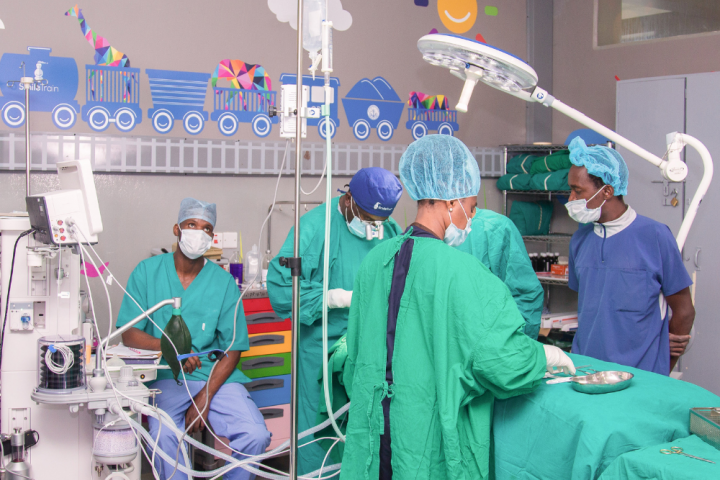
Creating a more child‑friendly surgical environment involves far more than playful colors. It requires a strategic blend of design, technology, communication, and family integration—the core elements of a healing environment. By combining evidence‑based design (like soothing light, sound control, and nature access) with child‑centered touches (artwork, distraction tools, personal items, and family presence), surgical teams can transform what once was a frightening space into one of calm and reassurance.
Children benefit physically—through faster recovery and less pain—and emotionally, through reduced stress and greater coping ability. Surgical staff gain too, since calmer patients are easier to care for and procedures proceed more smoothly. Implementing these principles together represents a powerful and compassionate commitment to pediatric well‑being.
By continuously evaluating and adapting spaces based on feedback, healthcare facilities can maintain surgical environments that not only heal bodies—but also nurture hope, comfort, and resilience in young patients and their families.

